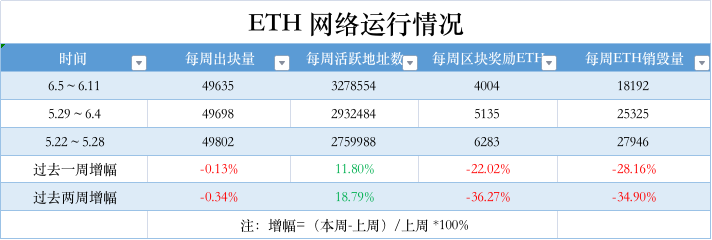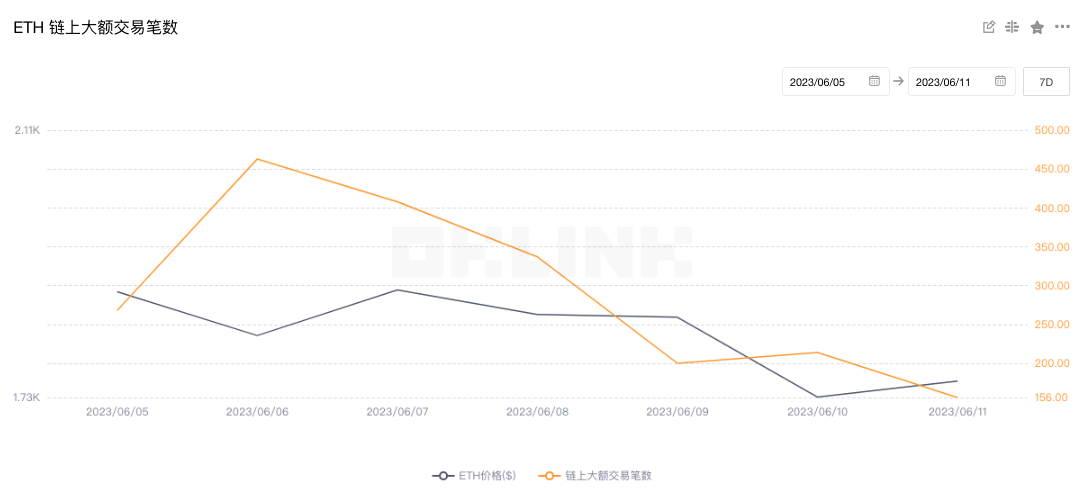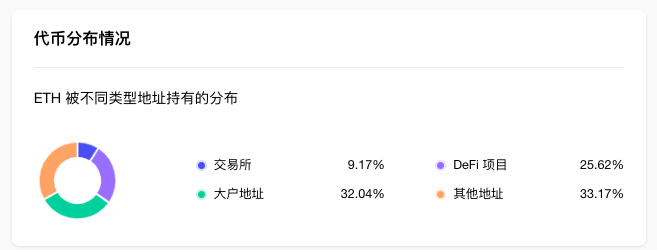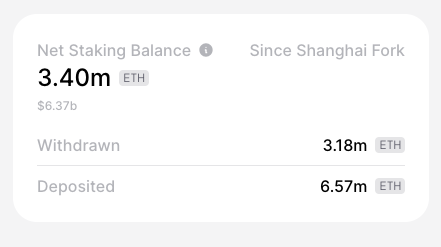
1. Overall overview
1. Overall overview
Ethereum developers have confirmed an upcoming overhaul of the network, dubbed Dencun. This upgrade includes five EIPs and is designed to add more data storage and reduce fees. The upgrade is centered on EIP-4844, in addition to four improvement proposals including EIP-1153, EIP-4788, EIP-5656, and EIP-6780. There's no firm date for the upgrade yet, but it's expected to go live by the end of 2023.
Second, the secondary market
Second, the secondary market
1. Spot market
The daily chart shows that the price is currently consolidating around $1,750, and the lower support level is $1,700; if the support is valid, it may continue to test $1,800 in the short term; if it falls below, it may fall further to $1,600.

ETH daily chart via OKX
The daily chart shows that the price is currently consolidating around $1,750, and the lower support level is $1,700; if the support is valid, it may continue to test $1,800 in the short term; if it falls below, it may fall further to $1,600.
2. Network operation

Etherscan 3. Large transaction
3. Large transaction

OKlink data4. Rich list address
4. Rich list address

OKLink dataOKLink data

token.unlocks3. Ecology and technology
3. Ecology and technology
1. Technological progress
Ethereum developers have confirmed an upcoming overhaul of the network, dubbed Dencun. This upgrade includes five EIPs and is designed to add more data storage and reduce fees. The upgrade is centered on EIP-4844, in addition to four improvement proposals including EIP-1153, EIP-4788, EIP-5656, and EIP-6780. There's no firm date for the upgrade yet, but it's expected to go live by the end of 2023. (coindesk)
2. Voice of the Community
(1) VanEck: Ethereum will rise to $11,800 in 2030
(2) Vitalik: Ethereum needs to undergo three technological changes and reshape the relationship between users and addresses
Vitalik Buterin, the co-founder of Ethereum, said that the three main technological transformations that Ethereum needs to undergo are: transition to L2 expansion, everyone turns to Rollup; transition to wallet security, everyone uses smart contract wallets; transition to privacy, Make sure that privacy-preserving money transfers are possible, and that all other gadgets that are being developed are privacy-preserving.
Without L2 scaling, Ethereum’s high transaction costs can hinder mass adoption, leading to centralized solutions. Without wallet security, users are reluctant to store funds and non-financial assets and turn to centralized exchanges. Without privacy, the public availability of all transactions compromises user privacy, pushing users toward centralized solutions that provide data protection, at least to some extent, where data can be hidden.
Three technological shifts will reshape the relationship between users and addresses. Users will have multiple addresses in L2 and face challenges in maintaining address consistency.
3. Project trends
(1) Etherscan Launches Beta Version of "Advanced Screening Tool" for Blockchain Analysis
(2) The Aave community initiated the ARFC proposal, proposing to introduce the native stablecoin GHO into the Ethereum mainnet
(3) StarkNet tool platform Crypto Mansion released version v0.13.1, supporting Cairo 1.1.0 compiler
(4) The Foundry alpha version of zkSync Era can support developers to deploy contracts, bridge assets between L1 and L2, and send transactions
(5) Taiko, the second layer network of Ethereum, has been launched on the Alpha-3 testnet
(6) Optimism completed the Bedrock upgrade of the main network, and the Bedrock sequencer has started
According to official news, with more and more enterprises, applications and developer communities building for the USDC standard, Coinbase has now added support for native USDC and bridged USDC on the Arbitrum chain, launching native USDC, developers and users do not need to Bridged to access. Arbitrum stated that this version of USDC will become the official version recognized within the Arbitrum ecosystem and will eventually replace the currently circulating Ethereum bridge version of USDC.
4. Borrowing
DeFiLlamaThe data shows that the value of locked collateral on the chain fell from $27.16 billion to $25.31 billion last week, a month-on-month decrease of 6.8%. From the perspective of individual projects, the top three lock-up values are: Lido $12.49 billion; MakerDAO $5.78 billion; Aave $4.38 billion.
4. News
(1) The top 10 Ethereum non-exchange addresses hold 31.8 million ETH, a record high
(2) The average transaction fee of Ethereum is close to a two-month low
(3) Cboe Digital was approved by the CFTC and plans to launch Bitcoin and Ethereum margin futures contracts in the second half of the year
Cboe Digital, a digital asset exchange owned by Cboe Global Markets, received approval from the U.S. Commodity Futures Trading Commission (CFTC) on Monday to begin offering physically and cash-settled margin futures contracts in the second half of this year, according to a statement. Physical settlement of digital assets will allow traditional financial firms to gain exposure to bitcoin or ethereum futures without the need for intermediary custody, said John Palmer, president of Cboe Digital.
Today Cboe Digital offers spot and derivatives trading in digital assets such as Bitcoin, Bitcoin Cash, Ethereum, Litecoin and USDC, in addition to operating a clearinghouse. The exchange has said it hopes to increase the variety of tokens currently traded on the platform.